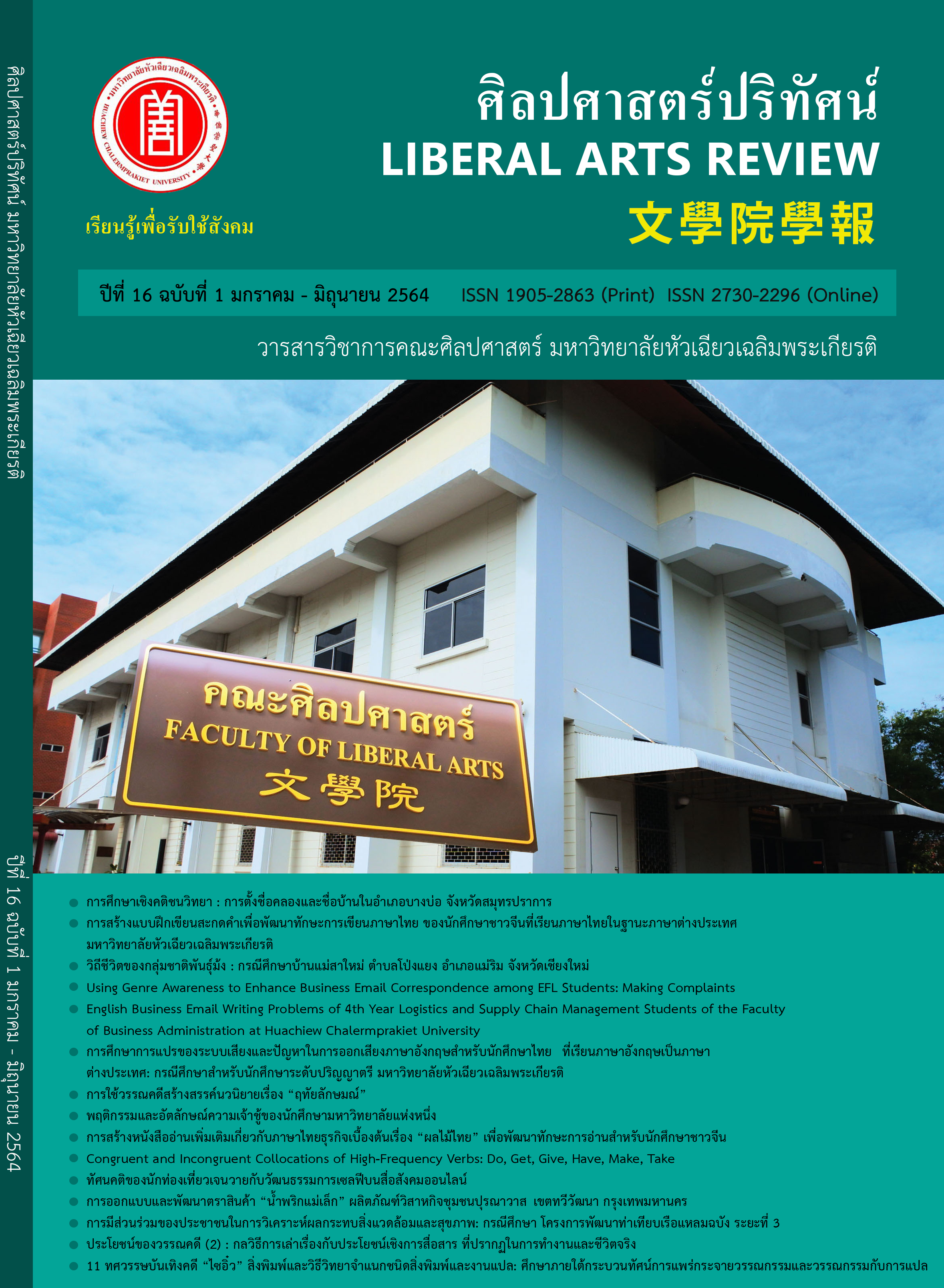Public Participation in Environmental Health Impact Assessment:
A Case Study of Development Laemchabang Port Phase 3
Keywords:
Public Participation, Environmental Health Impact Assessment, Port, StakeholdersAbstract
The objective of this article to study Public Participation in Environmental Health Impact Assessment : a case study of development Laemchabang Port phase 3. The research used qualitative methods with in-depth interviews and observation with samples of Stakeholders and study of Government agencies and Company related documents. The results of the evaluation of the public participation in the project revealed that the project was located in importance in terms of economy and marine biodiversity. Despite the existing laws, legal practice loopholes have prevented the true success of public participation. The obstacles also include the information provided to the people, which may be inadequate for their ability to make decisions; the information is offered solely by the project and without clarity, causing public confusion. The problems of the process implementation were caused by the limitations of the law, project owner and people in the area. The methods for enabling the success of transparency regarding the project’s execution included; welcoming of public participation from the beginning of the project so that the genuine needs of the local people can be heard; and the educational empowerment of the people. It is also suggested that the people should be open-minded and objectively welcome information regarding both the advantages and disadvantages of the project.
References
ผู้อำนวยการส่วนสิ่งแวดล้อมสำนักงานทรัพยากรธรรมชาติและสิ่งแวดล้อมจังหวัดชลบุรี. (12 มกราคม 2562).
สัมภาษณ์.
ผู้นำชุมชน หมู่ 9 เทศบ้านแหลมฉบัง. (15 มกราคม 2562). สัมภาษณ์.
ประชาชนท่านที่ 5 เทศบาลบ้านแหลมฉบัง. (18 มกราคม 2562) .สัมภาษณ์.
Beierle, T.C., & Cayford, J. (2002). Democracy in Practice : Public Participation in
Environmental Decisions. Washington DC: Resources for the Future.
Chompunth, C. (2013). Good governance and public participation in decision-making process of
development project. Journal of environmental management, 9(1), 85-106.
Fakkum, S. (2013). Environmental and Health ImpactAssessment System in Thailand. (Master’s
independent study report). National Institute of Development Administration, Bangkok.
Khorpornprasert, B. (2011). The approach to develop transparency standard of government
organizations. Journal of management sciences, 28(1), 33-48.
Phoochinda, W. (2012). Measures for Sustainable Energy Planning of the Community in
Thailand. Journal of environmental management, 8(2), 75-87.
Poboon,C. (2011). Environmental project management (4th ed.). Bangkok: Tippanet printing.
Phoochinda, W. (2012). Measures for Sustainable Energy Planning of the Community
in Thailand. Journal of environmental management, 8(2), 75-87.
Fuangchoonuch, M. & Chompunth, C. (2017). A Public Participation in Environmental Health
Impact Assessment: A Case Study of Krabi Power Plant Expansion Project. Journal of
Community Development Research(Humanities and Social Sciences), 2017; (10).
Srisawaluck, E., Rikshasuta, T., & Narkwiboonwong, W. (2001). Legal Framework for Local
Administration(Research report). Bangkok: The Thailand Research Fund.
Stufflebeam, D.L. (Ed). (1983). Evaluation Model: Viewpoints on Education and Human Services
Evaluation. Boston: Kluwer-Nijhoff Publishing.
Thailand Environment Institute. (2002). The decentralization and environmental management:
Public participation and local capacity building. Nonthaburi: Denfah printing.
Downloads
Published
How to Cite
Issue
Section
License
บทความที่ได้รับการตีพิมพ์เป็นลิขสิทธิ์ของวารสารศิลปศาสตร์วิชาการและวิจัย
ข้อความที่ปรากฏในบทความแต่ละเรื่องในวารสารวิชาการเล่มนี้เป็นความคิดเห็นส่วนตัวของผู้เขียนแต่ละท่านไม่เกี่ยวข้องกับมหาวิทยาลัยหัวเฉียวเฉลิมพระเกียรติ และคณาจารย์ท่านอื่นๆ ในมหาวิทยาลัยฯ แต่อย่างใด ความรับผิดชอบองค์ประกอบทั้งหมดของบทความแต่ละเรื่องเป็นของผู้เขียนแต่ละท่าน หากมีความผิดพลาดใดๆ ผู้เขียนแต่ละท่านจะรับผิดชอบบทความของตนเองแต่ผู้เดียว




